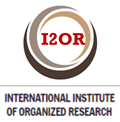SĂndrome de DiGeorge (Aplasia o Hipoplasia tĂmica). PresentaciĂłn y revisiĂłn de la literatura.
Texto completo:
PDFResumen
Se presenta lactante femenina de 6m de edad, portadora de sĂndrome genĂŠtico con Aplasia TĂmica, a la cual se le realizaron estudios inmunolĂłgicos y cromosĂłmicos. La patologĂa se caracteriza por un espectro de malformaciones, ausencia o poco desarrollo del timo y las glĂĄndulas paratiroides, unido a defectos en el tracto eferente del corazĂłn y anomalĂas craneofaciales (sĂndrome velocardiofacial). El tĂŠrmino sĂndrome de deleciĂłn 22q11.2 describe el problema cromosĂłmico subyacente o bien el tĂŠrmino sĂndrome velocardiofacial (velo-cardio-facial syndrome, VCFS) refiere los principales sistemas del cuerpo. La paciente coincidĂa con un SĂndrome de DiGeorge por infecciones a repeticiĂłn, fenotĂpicamente fascie compatible a la de Agenesia o Aplasia tĂmica al compararse con la de otros pacientes segĂşn lo observado en la bibliografĂa, valores de calcio hacia los lĂmites inferiores e imagen radiolĂłgica de timo disminuida de tamaĂąo, contribuyendo al conocimiento y la experiencia para el tratamiento posterior de pacientes con similares patologĂas.Â
Palabras clave
Referencias
Rafael Fabiano RM, Zen Paulo RG., Roman T, Graziadio C, Paskulin Giorgio A. SĂndrome de deleção: compreendendo o CATCH22. Rev. Paul. Pediatr. [artĂculo en Internet]. 2009 [Consultado 2 Febrero 2011]; 27(2): [211-220]. Disponible en: http://www.scielo.br/scielo.php?script=sci_arttext&pid=S0103-
Aglony IM, Lizama CM, MĂŠndez RC, Navarrete SC, Garay GF, Repetto LG. Manifestaciones clĂnicas y variabilidad inmunolĂłgica en nueve pacientes con sĂndrome de DiGeorge. Rev. MĂŠd. Chile [artĂculo en Internet]. 2004 [Consultado 2 Febrero 2011]; 132(1): [26-32]. Disponible en: http://www.scielo.cl/scielo.php?script=sci_arttext&pid=S0034-
Fomin A, Pastorino AC, Kim Chong A, Pereira CA, Carneiro-Sampaio M, Abe-Jacob CM. DiGeorge Syndrome: a not so rare disease. Clinics [artĂculo en Internet]. 2010 [Consultado 2 febrero 2011]; 65(9): [865-869]. Disponible en: http://www.scielo.br/scielo.php?script=sci_arttext&pid=S1807-
Di George AM. Congenital absence of the thymus and its immunological consequences: concurrence with congenital hypoparathyroidism. Birth Defects 1968; 4: 116-21.
Conley ME, Beckwith JB, Mancer JFK, Tenckhoff L. The spectrum of the DiGeorge syndrome. J Pediatr 1979; 94: 883-90.
Barrett D, Amann AJ, Wara DW, Cowan MJ, Fisher TJ, Stiehm RE. Clinical and immunological spectrum of DiGeorge syndrome. J Clin Lab Immunol 1981; 6: 1-6.
Muller M, Peter HH, Juppner H, Kallfelz HC, Krohn HP, Muller K et al. The DiGeorge syndrome I. Clinical evaluation and course of partial and complete forms of the syndrome. Eur J Pediatr 1988; 147: 496-502.
Muller W, Peter HH, Kallfelz HC, Franz A, Rieger CH. The DiGeorge sequence II. Immunological findings in partial and complete forms of the disorder. Eur J Pediatr 1989; 149: 96-103.
Greenberg F. What defines DiGeorge anomaly? J Pediatr 1989; 115: 412-3.
Bastian J, Law S, Vogler L, Lawton A, Herrod H, Anderson S et al. Prediction of persistent immunodeficiency in the DiGeorge anomaly. J Pediatr 1989; 115: 391-6.
Freedom RM, Rosen FS, Nadas AS. Congenital cardiovascular disease and anomalies of third and fourth pharyngeal pouch. Circulation 1972; 46: 165-72.
Bockman DL, Kirby ML. Dependence of thymus development on derivatives of neural crest. Science 1984; 223: 498-500.
De la Chapelle A, Herva R, Koivisto M, Aula P. A deletion in chromosome 22 can cause DiGeorge syndrome. Hum Genet 1981; 57: 253-6.
Driscoll DA, Salvin J, Sellinger B. Prevalence of 22q11 microdeletion in DiGeorge syndrome and velocardiofacial syndromes: Implications for genetic counselling and prenatal diagnosis. J Med Genet 1993; 30: 813-7.
De Decker HP, Lawrenson PB. The 22q11.2 deletion: from diversity to a single gen theory. Genet Med 2001; 3: 2-5.
MuĂąoz S, Garay F, Flores I, Heusser F, Talesnik E, Aracena M et al. Heterogeneidad de la presen-taciĂłn clĂnica del sĂndrome de microdeleciĂłn del cromosoma 22, regiĂłn q11. Rev MĂŠd Chile 2001; 129: 515-21.
Comans-Bitter WM, De Groot R, Van den Beemd, Neijens H, Wim CJ, Groenveld K et al. Immunophenothyping of blood lymphocytes in childhood. References values for lymphocytes subpopulations. J Pediatr 1997; 130: 388-93.
Buckley RH, Schiff R, Sampson HA. Development of immunity in severe primary T cell deficiency haploidentical bone marrow transplantation. J Immunol 1986; 136: 2398-407.
Burn J, Wilson DI, Scambler P, Goodship J. DiGeorge syndrome: Part of CATCH 22. J Med Genet 1993; 30: 852-6.
TobĂas ES, Morrison N, Whiteford ML, Tolmie JL. Towards earlier diagnosis of 22q11 deletions. Arch Dis Child 1999; 81: 513-4.
Van Mierop LHS, Kutsche LM. Cardiovascular anomalies in DiGeorge syndrome and importance of neural crest as a possible pathogenetic factor. Am J Cardiol 1986; 58: 133-7.
GarcĂa E, Camacho J, GĂłmez MJ, Del Castillo E, MartĂnez MJ, LĂłpez JP. Transient congenital hypoparathyroism and 22q11 deletion. J Pediatr Endocrinol Metab 2000; 13: 659-61.
Weinzimer SA. Endocrine aspects of the 22q11.2 deletion syndrome. Genet-Med 2001; 3: 19-22.
Markert ML, Majure M, Harville T, Hulka G, Oldham KT. Severe laryngomalacia and bronchomalacia in DiGeorge syndrome and CHARGE association. Pediatr Pulmonol 1997; 24: 364-9.
Deerojanawong J, Chang AB, Eng PA, Robertson CF, Kemp AS. Pulmonary disease in children with severe combined immunodeficiency and DiGeorge syndrome. Pediatr Pulmonol 1997; 24: 324-30.
Huang RY, Shapiro NL. Structural airway anomalies in patients with DiGeorge syndrome: A current review. Am J Otolaryngol 2000; 21: 326-30.
Wells TR, Landing BH, Galliani CA, Thomas RA. Abnormal growth of the thyroid cartilage in the DiGeorge syndrome. Pediatr Pathol 1986; 6: 209-25.
Sein K, Wells TR, Landing BH, Chow CR. Short trachea with reduced number of cartilage rings: A hitherto unrecognized feature of DiGeorge syndrome. Pediatr Pathol 1985; 4: 81-8.
Carlson C, Sirotkin H, Goldberg R, McKie J, Pantanjali SR, Weissman SM et al. Molecular definition of 22q11 deletion in 151 velo-cardio-facial syndrome patients. Am J Hum Genet 1997; 61: 620-9.
Iascone MR, Vottiorini S, Sacchelli M, SpadoniI, Simi P. Molecular characterization of 22q11 deletion in a three generation family with maternal transmission. Am J Med Genet 2002; 108: 319-21.
Pizzuti A, Novelli G, Ratti A, Amati F, Mari A, Calabrese G et al. UFD1L, a developmentally expressed ubiquitination gen, is deleted in CATCH 22 syndrome. Human Mol Genet 1997; 6: 259-65.
Enlaces refback
- No hay ningĂşn enlace refback.
Copyright (c) 2020 MULTIMED

Esta obra estĂĄ bajo una licencia de Creative Commons Reconocimiento-NoComercial-CompartirIgual 4.0 Internacional.










